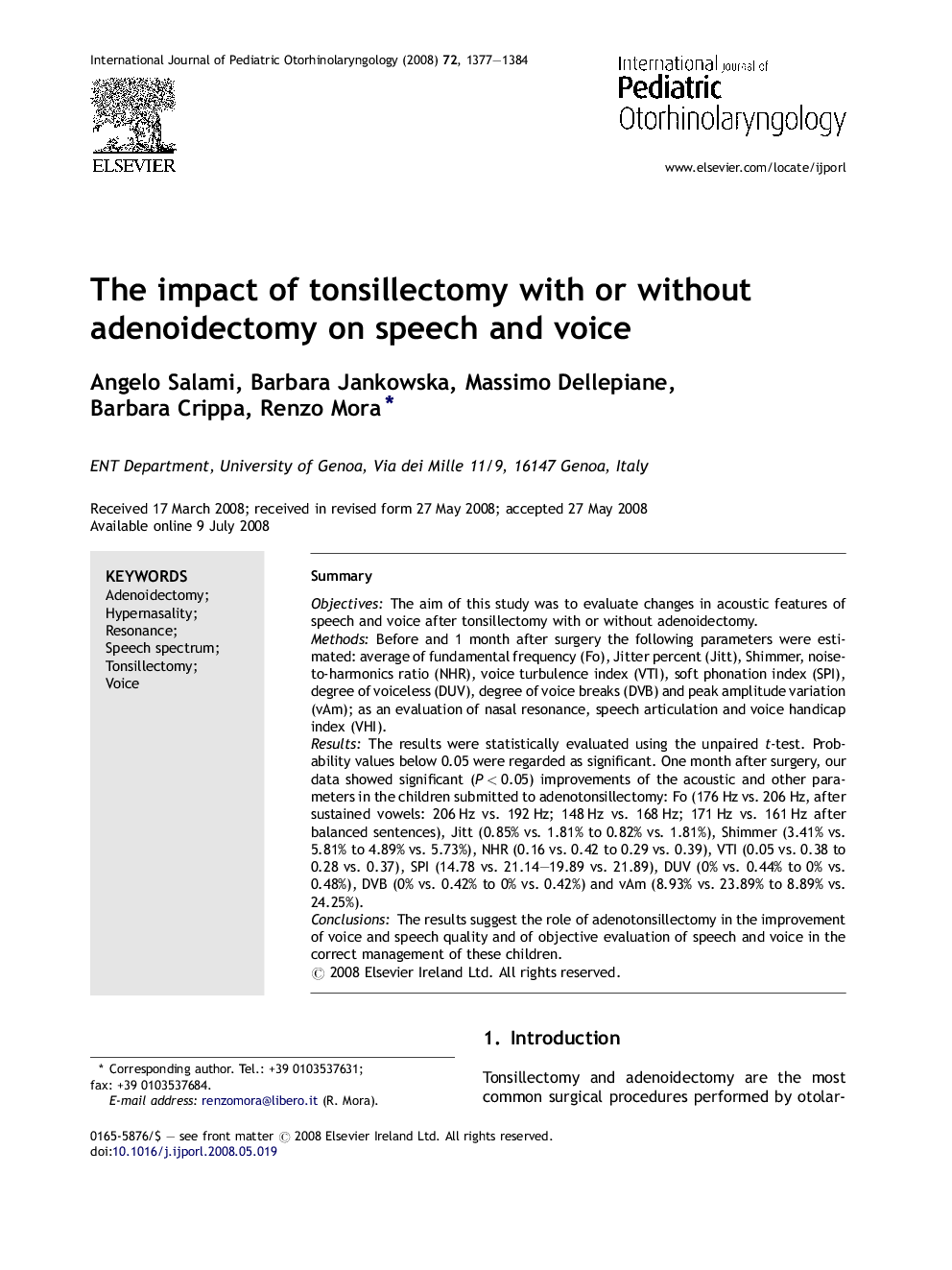| Article ID | Journal | Published Year | Pages | File Type |
|---|---|---|---|---|
| 4114540 | International Journal of Pediatric Otorhinolaryngology | 2008 | 8 Pages |
SummaryObjectivesThe aim of this study was to evaluate changes in acoustic features of speech and voice after tonsillectomy with or without adenoidectomy.MethodsBefore and 1 month after surgery the following parameters were estimated: average of fundamental frequency (Fo), Jitter percent (Jitt), Shimmer, noise-to-harmonics ratio (NHR), voice turbulence index (VTI), soft phonation index (SPI), degree of voiceless (DUV), degree of voice breaks (DVB) and peak amplitude variation (vAm); as an evaluation of nasal resonance, speech articulation and voice handicap index (VHI).ResultsThe results were statistically evaluated using the unpaired t-test. Probability values below 0.05 were regarded as significant. One month after surgery, our data showed significant (P < 0.05) improvements of the acoustic and other parameters in the children submitted to adenotonsillectomy: Fo (176 Hz vs. 206 Hz, after sustained vowels: 206 Hz vs. 192 Hz; 148 Hz vs. 168 Hz; 171 Hz vs. 161 Hz after balanced sentences), Jitt (0.85% vs. 1.81% to 0.82% vs. 1.81%), Shimmer (3.41% vs. 5.81% to 4.89% vs. 5.73%), NHR (0.16 vs. 0.42 to 0.29 vs. 0.39), VTI (0.05 vs. 0.38 to 0.28 vs. 0.37), SPI (14.78 vs. 21.14–19.89 vs. 21.89), DUV (0% vs. 0.44% to 0% vs. 0.48%), DVB (0% vs. 0.42% to 0% vs. 0.42%) and vAm (8.93% vs. 23.89% to 8.89% vs. 24.25%).ConclusionsThe results suggest the role of adenotonsillectomy in the improvement of voice and speech quality and of objective evaluation of speech and voice in the correct management of these children.
